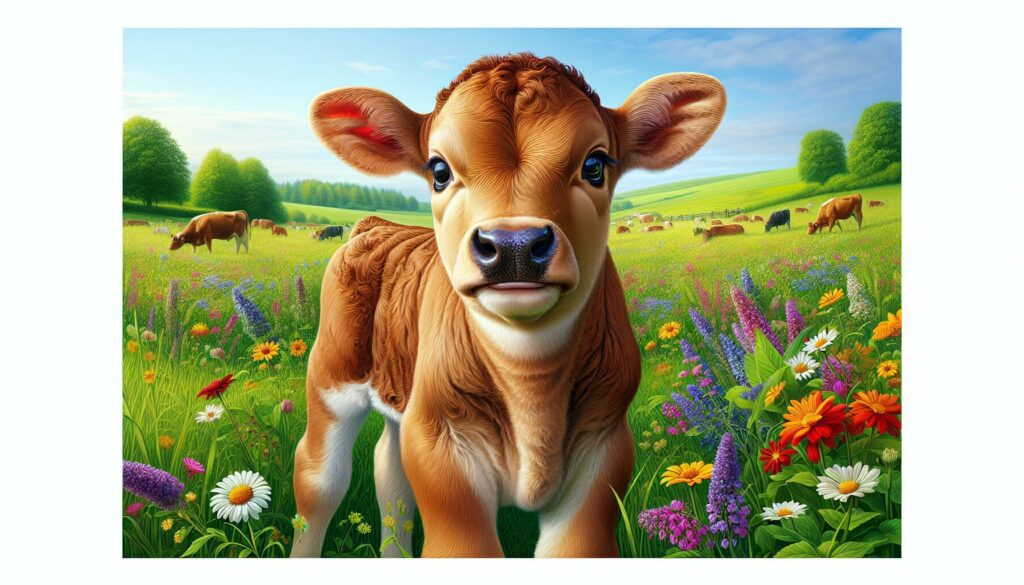When I first stumbled upon the term baby:uu4lsioqd1m= cow, I was intrigued by its unusual combination of words. It sparked my curiosity about the fascinating world of animal nomenclature and the unique identifiers we assign to different species. Understanding these identifiers not only enriches our knowledge but also connects us to the broader ecosystem.
As I delved deeper into this topic, I discovered the importance of recognizing and naming animals accurately. It’s more than just a label; it reflects our relationship with nature and our efforts to study and conserve wildlife. Join me as I explore the significance of this intriguing phrase and what it reveals about our understanding of cows and their young.
- The term baby:uu4lsioqd1m= cow refers to a young cow or calf, emphasizing the importance of accurate animal identification for conservation efforts.
- Calves experience rapid growth and require proper nutrition, transitioning from mother’s milk to solid food to ensure healthy development.
- Social interaction is crucial for calves, facilitating learning and establishment of herd dynamics, which are essential for their well-being.
- Understanding the benefits of cow-derived products highlights their nutritional value for infants, supporting growth and cognitive development.
- Alternatives to cow’s milk, such as plant-based options and goat milk, cater to diverse dietary needs and preferences.
- Optimal use cases for cow products include infant nutrition, child-friendly recipes, and various culinary applications, enhancing both nutrition and flavor.
Baby:Uu4lsioqd1m= Cow
The term baby:uu4lsioqd1m= cow refers specifically to a young cow, commonly known as a calf. Calves are the offspring of cows, typically born after a gestation period of about nine months. Understanding calves’ characteristics and behaviors is essential in the context of cattle husbandry and agriculture.
Calves exhibit rapid growth during their early months, gaining an average of 1.5 to 2.0 pounds per day. They primarily consume their mother’s milk during the first few weeks, transitioning to solid food, such as grass or hay, soon after. Their diet impacts their health and growth, making proper nutrition vital.
Socialization also plays a critical role in a calf’s development. Young cows thrive in environments where they interact with others, learning essential behaviors and establishing herd dynamics. These interactions contribute to their overall well-being and adaptability in various settings.
Recognizing the significance of calves in agriculture emphasizes the importance of caring for and managing them responsibly. Proper handling and health management practices can lead to healthier adult cows, enhancing livestock productivity. Understanding the nuances of baby:uu4lsioqd1m= cow not only reflects our knowledge of bovines but also underscores our responsibility towards animal welfare and sustainable farming practices.
Features of Baby:uu4lsioqd1m= Cow

The baby:uu4lsioqd1m= cow represents the young bovine animal, commonly called a calf. Exploring its features reveals important aspects of their development and well-being.
Design and Aesthetics
Design elements of a calf’s appearance, including its size and color patterns, contribute to its overall appeal. Calves typically exhibit soft, sleek fur, often showcasing a mix of white, black, or brown hues. Their large, expressive eyes and floppy ears enhance their charm, evoking affection from humans. The body structure is compact, with short legs and a slightly rounded belly, representing their growing needs and attributes. A calf’s design is not only aesthetically pleasing but also functional, supporting mobility and balance as they navigate their environment.
Functionality and Usability
Functionality of calves centers on their ability to thrive in various environments. Their biological development enables them to adapt quickly to changing conditions. Calves rely on their mother’s milk for initial nourishment, transitioning to solid food as they mature. This dietary adaptability promotes healthy growth and weight gain. Usability aspects include their innate behaviors, such as social interaction and playfulness, which facilitate learning and establishing herd hierarchies. These traits contribute to their success in both natural and agricultural settings, ensuring they grow into healthy adult cows that fulfill their roles in livestock production.
Benefits of Baby:uu4lsioqd1m= Cow

Understanding the benefits of baby:uu4lsioqd1m= cow offers insights into its role in both agriculture and child development. The following sections explore specific advantages.
Convenience for Parents
Convenience arises when utilizing baby:uu4lsioqd1m= cow products. Parents can find various dairy options that provide essential nutrients without complicated preparation. Ample availability of milk products simplifies meal planning, allowing for easy incorporation into diets. Accessible formulas supplement infant nutrition, offering necessary vitamins and minerals. Moreover, using products from happy and well-cared-for calves promotes ethical sources, reassuring parents about their choices.
Developmental Advantages for Infants
Developmental advantages of baby:uu4lsioqd1m= cow are numerous. Nutrient-rich milk supports robust growth, providing protein for muscle development and a strong immune system. Calcium and vitamin D in dairy products promote bone health, crucial during early life stages. The presence of beneficial fats aids in brain development, enhancing cognitive function in infants. Additionally, exposure to varied flavors in dairy products can encourage the acceptance of diverse foods later in life. Overall, the nutritional benefits empower both growth and brain development for infants.
Recommendations and Comparisons

This section covers alternatives and optimal scenarios for baby:uu4lsioqd1m= cow and its related products.
Alternative Products
Various alternatives exist for those seeking options beyond baby:uu4lsioqd1m= cow. Consider the following:
- Plant-based Milks: Options like almond, soy, and oat milk provide dairy-free choices. These products appeal to lactose-intolerant individuals and vegans.
- Goat Milk: Goat milk offers a closer nutritional profile to cow’s milk, making it suitable for those allergic to cow’s milk but tolerating goat’s.
- Fortified Non-Dairy Alternatives: Many brands fortify non-dairy options with vitamins and minerals similar to cow’s milk, ensuring optimal nutrient intake.
Each alternative serves distinct dietary needs and preferences, allowing for flexibility in nutrition.
Best Use Cases
Baby:uu4lsioqd1m= cow products excel in various scenarios. Some recommended uses include:
- Infant Nutrition: Cow’s milk and its derivatives support growth in infants once they reach the appropriate age. They provide essential fats and proteins necessary for development.
- Child-Friendly Recipes: Incorporating cow’s milk into smoothies, cereals, and baked goods enhances flavor while delivering nutrients.
- Cooking and Baking: Cow’s milk proves versatile in culinary applications. Its creaminess works well in sauces, soups, and desserts, adding richness to dishes.
Identifying the best uses for baby:uu4lsioqd1m= cow products leads to maximizing their nutritional benefits while catering to different culinary needs.
Exploring the term baby:uu4lsioqd1m= cow has opened my eyes to the intricate relationship we share with these animals. Understanding calves not only enriches our knowledge of livestock but also highlights the importance of their care in agriculture.
The nutritional benefits derived from calves are invaluable for both infants and adults. I’ve come to appreciate how responsibly sourced dairy products can support growth and development.
As we navigate dietary choices today, recognizing the value of these young cows and their contributions is essential. It’s a reminder of our responsibility towards animal welfare and sustainable practices.

